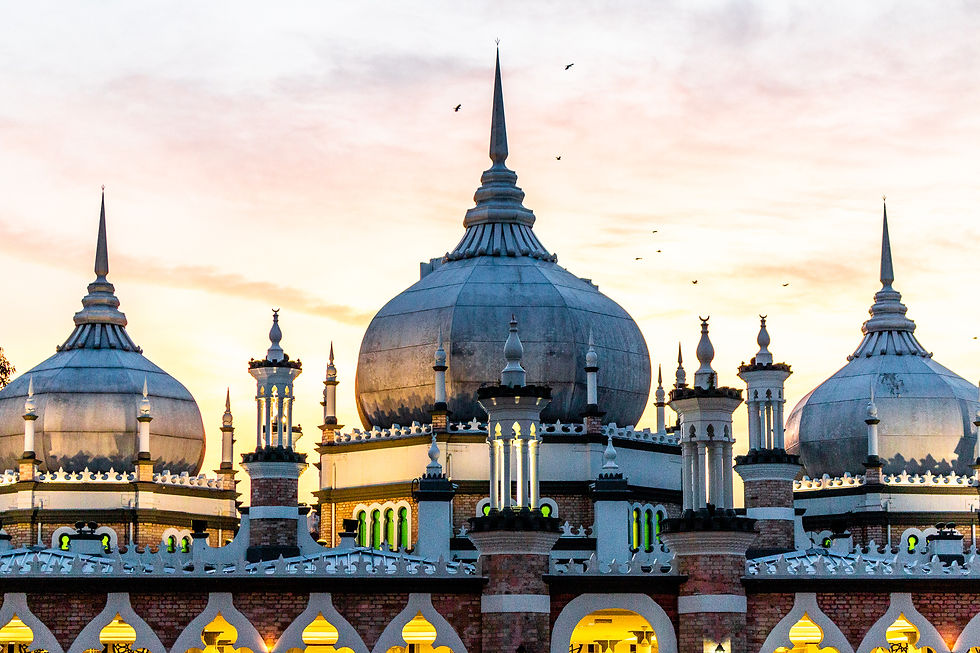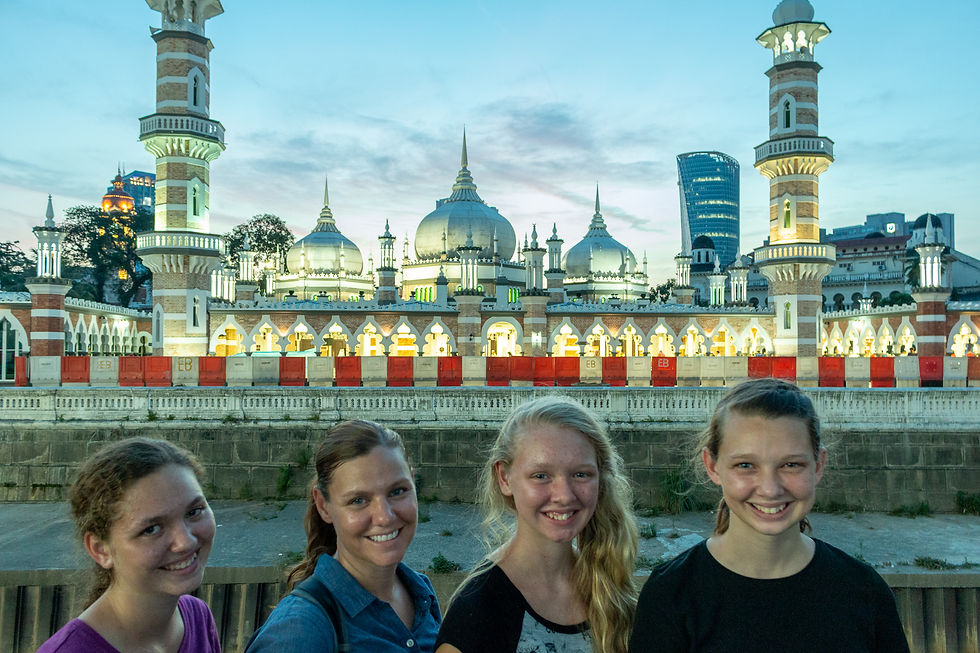Kuala Lumpur’s Friday Mosque: Beauty from the Beast
- Rand Blimes

- Apr 29, 2025
- 3 min read

We had a rough first outing in Kuala Lumpur (KL), so we were determined to make our first evening there a good one. The plan was to head down to Jamed Masjid, Kuala Lumpur's Friday Mosque, for sunset. It was still early on in Ramadan, and we knew there would be celebrations there once the evening call to prayer sounded and the day’s fast was over.
The Friday Mosque, officially known as Masjid Jamek Sultan Abdul Samad, is one of the oldest mosques in Kuala Lumpur. Completed in 1909, it was built at the confluence of the Klang and Gombak rivers—the very spot where the city itself was born.
The mosque’s striking Mughal architecture, with its onion-shaped domes and arched colonnades, stands out amid the urban chaos of downtown KL. For decades, it served as the city’s main mosque before Masjid Negara (the National Mosque) was constructed. Despite its smaller size, Masjid Jamek remains a spiritual and symbolic heart of the city.
We walked to the mosque, so we once again had to dodge cars and scurry across streets. But the walk was a fairly straight line this time, so navigation was easy. There were no train tracks or major freeways we had to cross. Just plain old death-trap streets.
We got to the mosque just before sunset. Outside, a Ramadan Bazaar was set up. These bazaars consisted of a conglomeration of vendors selling food. Most of the stalls were set beneath green tarps, and young men called out to us, hawking their food. The smell was heavenly, but this bazaar didn’t look nearly as sanitary as the ones we had eaten at in Melaka, so we opted not to eat there.
Instead, we walked to the entrance of the mosque. We could see the interior through the gate, and the mosque was flooded with worshipers getting ready for prayer. Because it was prayer time, we were not allowed inside.
So instead of entering, we walked around to the side of the mosque, went again through the bazaar, and came out the back into an open space. Directly in front of us was one of the two rivers that KL was founded on. The other river, and their confluence, was only 50 meters or so distant.
The rivers looked more like industrial drainage ditches than rivers. Their banks were made of concrete bricks rather than mud, and they were lined with graffiti rather than trees. And the water flow was more that of a stream than a river.
But directly across the river from us stood the Friday Mosque, its solid minarets and graceful domes looking out over the river proudly. Birds circled the mosque’s spires, and the clouds began to turn pale pink as it grew darker.
It was quiet for a moment, and then the call to prayer sounded.
We stood there, listening and looking.
Our immediate surroundings were depressingly ugly. Broken concrete blocks from a project started long ago and now seemingly abandoned littered the entire area. Garbage was sprinkled throughout.
But across the river, the sun was setting behind the mosque. Architecture and nature vied for our attention, each stunning on its own, but spectacular together.
As the call to prayer continued to sound, we could hear the happy voices of those back in the bazaar who were now readying to eat their dinners, and celebrating another day of devotion behind them.
We stood there surrounded by rubble but looking to glory, listening as the call to prayer died away. Clearly KL would not be an easy city, and we would have to search to find the transforming moments that cobble together as great memories.
KL got off to a rough start, but the last note was so beautiful.
I was hopeful.
We had only this one day for now, as we were planning to fly off to Borneo the next day. But we would be back, and we would have a few more days to see what KL had in store for us. Because travel, we would get another crack at learning to love a city that wouldn't conform to our expectations, but rather called on us to play by its rules.




Comments